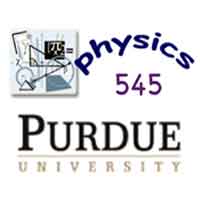Lecture 19: Pauli Paramagnetism and Intro to Ferromagnets
How many electrons get polarized when you apply a magnetic field to a metal? Is it all the electrons inside the Fermi surface? It turns out that only a small fraction of the electrons are able to respond -- most are stuck deep inside the Fermi surface, and the Pauli exclusion principle does not allow the spins to flip in response to the magnetic field. This is Pauli paramagnetism, and we derive the corresponding magnetic susceptibility (how easy it is to magnetize something).
We also begin to study ferromagnets -- these are your refrigerator magnets.
Lecture Audio
We also begin to study ferromagnets -- these are your refrigerator magnets.
Lecture Audio

